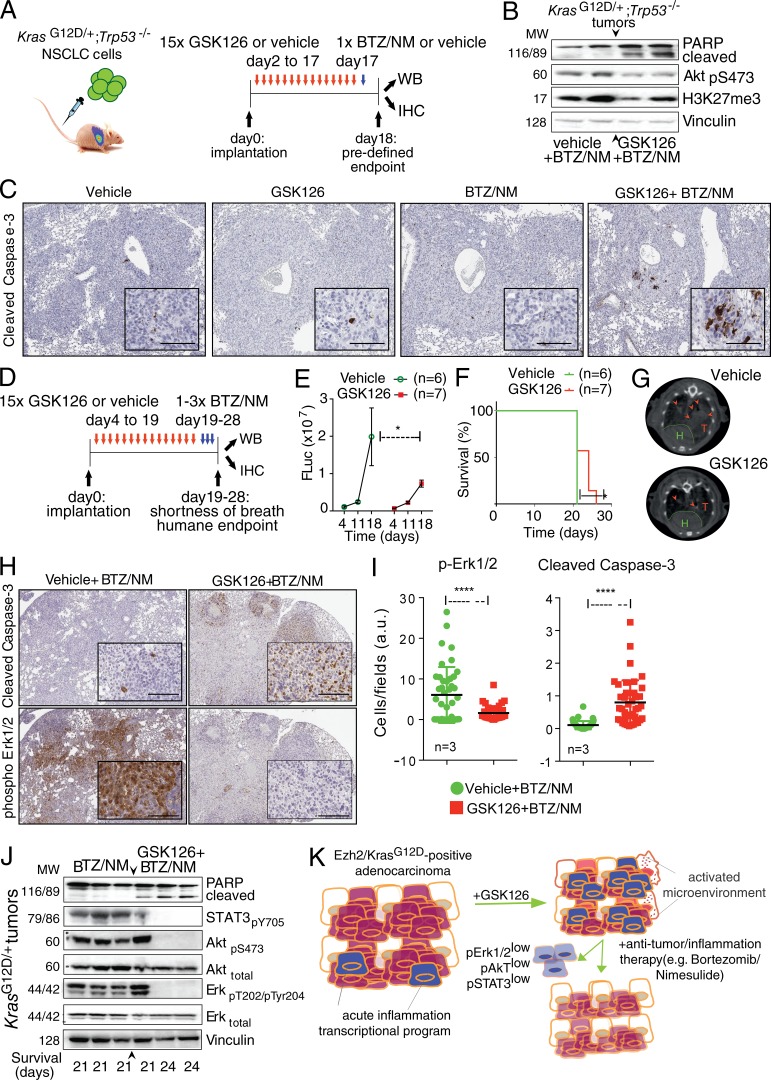Figure 7.
Ezh2 inhibition enhances response to BTZ/NM in Kras-driven NSCLC grafts. (A) Outline of in vivo sequential treatment of KrasG12D/+;Trp53−/− grafts with GSK126/vehicle and MTD of BTZ/NM. WB, Western blot. (B and C) Immunoblot and representative IHC (n = 3) of KrasG12D/+;Trp53−/− tumors from A using the indicated antibodies. MW, molecular weight. (D) Outline of in vivo sequential treatment of KrasG12D/+;Trp53−/− grafts with GSK126/vehicle and BTZ/NM. (E) Longitudinal imaging of tumor growth for the experiment in (D) by luminescence. P value is by two-way ANOVA. (F) Overall survival of mice in E. (G) Representative micro-CT scans of KrasG12D/+;Trp53−/− vehicle-treated tumors and of good responders to in vivo GSK126 (H, heart; T and arrowheads, tumors). (H) Representative IHC (n = 3) of KrasG12D/+;Trp53−/− tumors from D and E using the indicated antibodies. (I) Quantification of cells showing immunoreactivity to the indicated antibodies. The full lung area for individual animals (n = 3) was divided into equal-sized fields, and ten fields were subjected to ImageJ automated counting. a.u., arbitrary units. (J) Immunoblot of KrasG12D/+;Trp53−/− tumors from D and E using the indicated antibodies. (K) A model for therapeutic PRC2 inhibition in Kras-driven NSCLC. GSK126 amplifies acute inflammation in Ezh2-expressing NSCLC and modifies the tumor tissue and its microenvironment enhancing the response to subsequent selected treatments such as proteasome inhibitors and anti-inflammatory drugs. Error bars represent mean ± SEM. Scale bars represent 100 µM. *, P ≤ 0.05; ****, P ≤ 0.0001.

